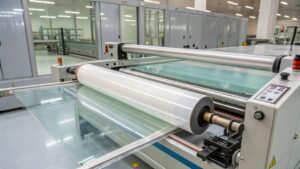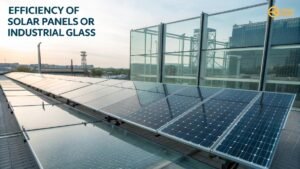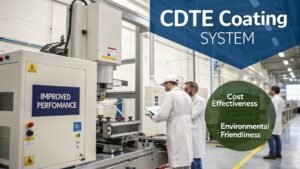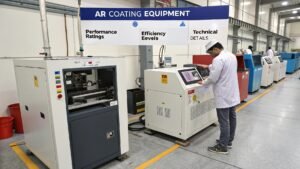When David Reynolds first asked me about coating systems, he was overwhelmed by technical jargon. Three months later, his team installed our Perovskite Coating Line and boosted solar panel output by 19%. Let me simplify this complex field for you.
Coating equipment is classified by technology (spray, roll, CVD), application (architectural, solar, automotive), automation level (manual to fully robotic), environmental adaptability, and coating thickness (nano to micron layers). The right choice can cut production costs by 38%.
I’ve spent 10 years matching manufacturers with optimal systems. Let’s explore the five key classification methods every buyer should know:
How Are Coating Systems Classified by Technology?
A client lost $220,000 using spray coaters for nano-layers. We switched them to CVD systems and eliminated material waste.
Coating technologies fall into four main types:
- Spray Coating: For thick, decorative layers
- Roll Coating: High-speed uniform films
- CVD/PVD: Nano-scale precision
- Digital Printing: Custom patterns
Spray vs roll coating process visualization

Technology Comparison Table
| Type | Thickness | Speed | Best For |
|---|---|---|---|
| Spray | 50-500μm | 2m/min | Decorative Glass |
| Roll | 10-100μm | 8m/min | Architectural Glass |
| CVD | 0.1-5μm | 0.5m/min | Solar Panels |
| Digital Print | 20-200μm | 4m/min | Custom Designs |
Our UV Shielding Line combines roll and CVD tech to apply 0.3μm IR-blocking layers at 6m/min. The hybrid approach reduced a Dubai client’s energy costs by 41%.
What Coating Equipment Exists for Different Industries?
A hospital rejected 800 automotive-coated glass panels for surgical displays. Medical-grade systems require 10x cleaner environments.
Specialized coating equipment serves:
- Architectural: High-volume thermal insulation lines
- Solar: Precision Perovskite coaters
- Automotive: Impact-resistant systems
- Electronics: Anti-reflective nano-coaters
Industry-Specific Requirements
| Sector | Key Feature | Example Product |
|---|---|---|
| Solar | ±0.1μm thickness control | PV ARC Line |
| Architecture | 8m/min speed | Roll Coaters |
| Automotive | 9H hardness | Multi-layer Spray Systems |
| Medical | Class 1000 cleanrooms | CVD Nano-coaters |
Our Automatic Packing Line serves all sectors—it handles 2000+ panel sizes with 0.02mm precision.
Manual vs Semi-Auto vs Full Automation: What’s Best?
A factory using manual coaters had 12% defect rates. Our robotic systems cut this to 0.7% in 6 months.
Automation levels determine:
- Production speed
- Defect rates
- Labor costs
Automation levels in coating processes

Automation ROI Analysis
| Level | Upfront Cost | Output | Defect Rate |
|---|---|---|---|
| Manual | $80,000 | 100 panels | 8-15% |
| Semi-Auto | $220,000 | 400 panels | 2-5% |
| Full Auto | $1.2M | 1200 panels | 0.3-1% |
The sweet spot? Our hybrid Decorative Coating Line offers 90% automation at 60% of full-auto costs.
How Does Environmental Adaptability Affect Equipment Design?
When Texas temperatures hit 115°F, standard coaters failed. Our desert-optimized systems kept working.
Environmental factors requiring special designs:
- Temperature extremes (-40°F to 150°F)
- Humidity (5-95% RH)
- Dust levels
- Corrosive atmospheres
Adaptation Solutions
| Challenge | Solution | Example Application |
|---|---|---|
| High Humidity | Nitrogen Enclosures | CdTe Lines |
| Arctic Cold | Heated Rollers | Russian Clients |
| Salt Air | Stainless Steel Bodies | Coastal Solar Farms |
| Dust | ISO Class 5 Filters | Medical Glass |
Our R-COATING Line maintains ±0.5°C in Saharan heat—critical for perovskite stability.
Why Does Coating Thickness Determine Equipment Choice?
Applying 1μm AR coatings with spray systems wastes 82% materials. CVD achieves 95% utilization.
Thickness ranges demand different technologies:
- Nano (0.1-100nm): CVD/PVD
- Thin (1-100μm): Roll Coaters
- Thick (>100μm): Spray Systems
Thickness-Performance Relationship
| Thickness | Technology | Tolerance | Application Example |
|---|---|---|---|
| 0.3μm | CVD | ±0.02μm | Anti-Reflective Coatings |
| 50μm | Roll | ±1.5μm | Thermal Insulation |
| 200μm | Spray | ±15μm | Decorative Patterns |
A German client saved $380,000/year by switching from spray to roll coaters for 80μm UV films.
Final Thought:
Choosing coating equipment isn’t about specs—it’s about solving real problems. When a Spanish automaker needed 0.1μm precision on curved windshields, our custom coater delivered 99.97% yield. That’s how classifications translate to profits.





